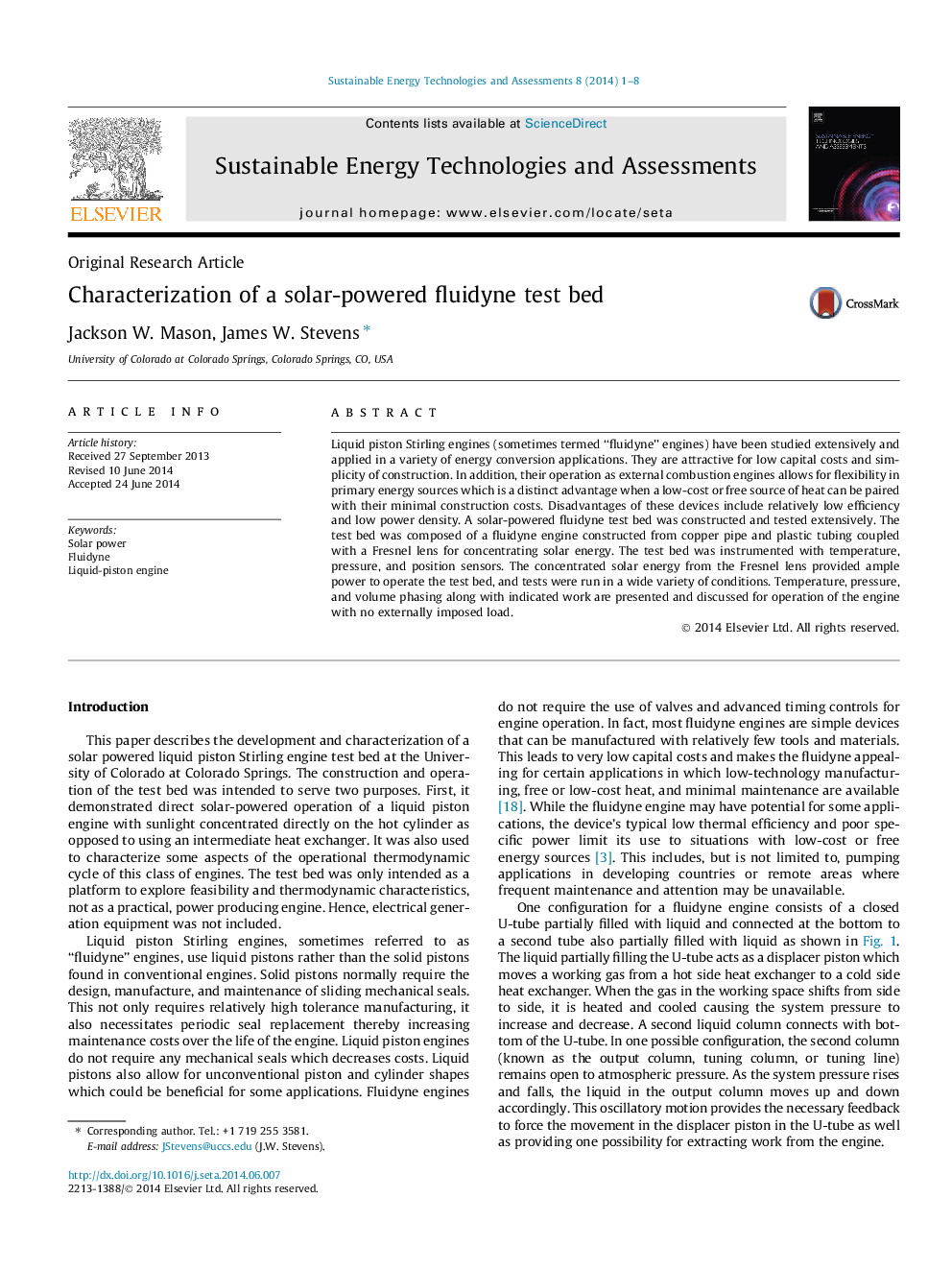| Article ID | Journal | Published Year | Pages | File Type |
|---|---|---|---|---|
| 1752673 | Sustainable Energy Technologies and Assessments | 2014 | 8 Pages |
Abstract
Liquid piston Stirling engines (sometimes termed “fluidyne” engines) have been studied extensively and applied in a variety of energy conversion applications. They are attractive for low capital costs and simplicity of construction. In addition, their operation as external combustion engines allows for flexibility in primary energy sources which is a distinct advantage when a low-cost or free source of heat can be paired with their minimal construction costs. Disadvantages of these devices include relatively low efficiency and low power density. A solar-powered fluidyne test bed was constructed and tested extensively. The test bed was composed of a fluidyne engine constructed from copper pipe and plastic tubing coupled with a Fresnel lens for concentrating solar energy. The test bed was instrumented with temperature, pressure, and position sensors. The concentrated solar energy from the Fresnel lens provided ample power to operate the test bed, and tests were run in a wide variety of conditions. Temperature, pressure, and volume phasing along with indicated work are presented and discussed for operation of the engine with no externally imposed load.
Keywords
Related Topics
Physical Sciences and Engineering
Energy
Energy Engineering and Power Technology
Authors
Jackson W. Mason, James W. Stevens,
